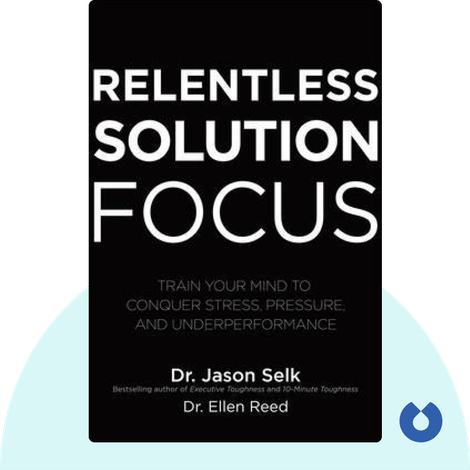"Never doubt that a small group of thoughtful, concerned citizens can change the world. Indeed it is the only thing that ever has."
-Margeret Mead
THE ART OF LEADERSHIP
Revolutionizing Change: The Power of Thoughtful Action
The Genesis of Change
Margaret Mead's assertion that a small group of thoughtful, concerned citizens can change the world rings true in today's dynamic landscape. This sentiment has been exemplified by recent grassroots movements and initiatives worldwide. One notable example is the environmental advocacy group "Green Horizons," which has gained significant traction in promoting sustainable practices.
Mobilizing Communities
Green Horizons, founded by a handful of eco-conscious individuals, has swiftly transformed into a robust movement. By organizing community clean-ups, educational workshops, and lobbying for greener policies, they have mobilized thousands of citizens. Their efforts have led to tangible improvements in local environments and increased awareness about sustainability.
The Road to Success
The group's success lies in its strategic approach. By leveraging social media and collaborating with local governments, Green Horizons has effectively communicated its mission. Their campaigns are designed to be inclusive, ensuring that people from all walks of life can participate. This inclusivity has been a cornerstone of their growing influence.
Challenges and Triumphs
Despite their achievements, Green Horizons faces challenges. Securing funding and maintaining momentum are constant hurdles. However, their transparent operations and the passionate dedication of their volunteers have helped them navigate these obstacles. The group remains committed to its cause, continually adapting and evolving its strategies.
Looking Ahead
As Green Horizons looks to the future, their focus is on expanding their reach and impact. Plans are underway to launch nationwide initiatives and forge international partnerships. Their vision is a world where sustainability is not just an ideal but a reality.
Conclusion
The journey of Green Horizons illustrates the profound impact a small group of thoughtful citizens can have. Their story is a testament to the power of collective action and the potential for meaningful change. As we look ahead, the efforts of such groups inspire hope and highlight the importance of community-driven initiatives in shaping a better world.
COMMERCIAL CONSTRUCTION
Top Construction Loan Lenders for 2024: What You Need to Know
As the construction industry continues to boom, securing the right financing has become crucial. CNN Underscored has highlighted the best construction loan lenders for 2024, providing essential insights for builders and homeowners alike.
The Top Contenders
Among the top lenders, Rocket Mortgage, Flagstar Bank, and Nationwide Home Loans stand out. Rocket Mortgage offers a streamlined application process with competitive rates. Flagstar Bank is noted for its flexible loan options and personalized service, making it a favorite among custom home builders. Nationwide Home Loans, meanwhile, is praised for its extensive network and strong customer support.
Details and Comparisons
Rocket Mortgage simplifies the application process through its digital platform, which is ideal for tech-savvy users. Flagstar Bank provides tailored loans, accommodating various project sizes and budgets. Nationwide Home Loans leverages its extensive network to offer comprehensive support, ensuring that borrowers can find the best possible terms.
Challenges in Construction Financing
Securing a construction loan involves navigating numerous challenges, including fluctuating interest rates and stringent qualification requirements. Lenders often require detailed project plans and budgets, making the application process complex.
Future Outlook
Looking ahead, the construction financing landscape is expected to become even more competitive. Advances in technology and an increasing number of lenders entering the market will likely drive innovation, making it easier for borrowers to find suitable financing solutions.
Conclusion
Choosing the right construction loan lender is essential for the success of any building project. By considering the strengths of Rocket Mortgage, Flagstar Bank, and Nationwide Home Loans, borrowers can make informed decisions, ensuring their projects are well-funded and positioned for success. As the industry evolves, staying informed about the best financing options will remain crucial.
What do you think of Rocket Mortgage, Flagstar Bank, and Nationwide Home Loans for your next construction project?
#ConstructionLoans #HomeBuilding #Finance2024— #The Dig Daily Dose (#@TheDigDailyDose)
6:54 AM • Aug 6, 2024
INFRASTRUCTURE INDUSTRY
Life Sciences Construction Booms in 2024: A Closer Look
The life sciences sector is witnessing an unprecedented construction boom in 2024. This surge is driven by the demand for new research facilities, biomanufacturing plants, and specialized laboratories. Key players, including industry giants and emerging biotech firms, are leading the charge, responding to the growing needs of the healthcare and pharmaceutical industries.
Key Drivers and Projects Several factors are fueling this growth. The COVID-19 pandemic highlighted the need for advanced research and development infrastructure, accelerating investment in life sciences construction. Additionally, advancements in biotechnology and personalized medicine have created a demand for state-of-the-art facilities.
Prominent projects include the expansion of existing research campuses and the development of new biomanufacturing hubs. These projects aim to enhance the capacity for producing life-saving drugs and innovative treatments. For instance, significant investments are being made in Boston, San Francisco, and Raleigh-Durham, known for their robust biotech ecosystems.
Challenges and Solutions Despite the optimistic outlook, the industry faces challenges. Rising construction costs, labor shortages, and supply chain disruptions are significant hurdles. However, companies are adopting innovative solutions such as modular construction and sustainable building practices to mitigate these issues. These approaches not only reduce costs and construction time but also align with the industry's commitment to environmental responsibility.
Future Outlook Looking ahead, the life sciences construction boom shows no signs of slowing down. With continuous advancements in medical research and technology, the demand for cutting-edge facilities will persist. Industry experts predict sustained growth, driven by the ongoing need for innovation in healthcare and pharmaceuticals.
In conclusion, the life sciences sector is experiencing a transformative period marked by substantial investment in construction. As the industry evolves, these developments promise to enhance research capabilities and drive medical breakthroughs, shaping a healthier future for all.
How will rising costs impact the 2024 life sciences construction boom? Explore solutions and trends here!
#LifeSciences #ConstructionBoom #HealthcareInnovation— #The Dig Daily Dose (#@TheDigDailyDose)
6:53 AM • Aug 6, 2024
RESIDENTIAL RESEARCH
U.S. Cities Invest in Affordable Housing Amid Growing Crisis
In response to the escalating housing affordability crisis, numerous U.S. cities are making significant investments in affordable housing projects. The move comes as housing costs continue to outpace wages, leaving many Americans struggling to find affordable places to live. Cities like New York, Los Angeles, and Chicago are at the forefront of this initiative, channeling billions of dollars into the development and preservation of affordable housing units.
Details and Key Players
New York City has committed over $1 billion to various affordable housing projects, focusing on both new constructions and renovations. Similarly, Los Angeles has approved several measures to fund affordable housing, including a $1.2 billion bond measure aimed at constructing 10,000 affordable units. Chicago's strategy includes leveraging public-private partnerships to enhance housing affordability and access.
These initiatives involve collaboration between city governments, nonprofit organizations, and private developers. Key players such as Habitat for Humanity, Enterprise Community Partners, and local housing authorities are instrumental in driving these efforts. The aim is not only to increase the availability of affordable housing but also to ensure these units are accessible to the most vulnerable populations, including low-income families, seniors, and individuals experiencing homelessness.
Challenges and Outlook
Despite these investments, challenges remain. High land costs, regulatory hurdles, and community opposition can slow the development of affordable housing. Additionally, the COVID-19 pandemic has exacerbated the housing crisis, highlighting the urgent need for more affordable options.
Looking forward, cities are exploring innovative solutions to overcome these obstacles. Modular construction, adaptive reuse of existing buildings, and inclusionary zoning policies are some of the strategies being considered to streamline the development process and reduce costs. As these projects progress, they are expected to provide much-needed relief to thousands of families, contributing to more stable and inclusive communities.
By addressing the affordable housing crisis with targeted investments and innovative approaches, U.S. cities are taking crucial steps towards ensuring that all residents have access to safe, affordable housing. The success of these initiatives will depend on sustained commitment and collaboration across all sectors.
How will U.S. cities overcome challenges like high land costs and community opposition to deliver affordable housing?
#HousingCrisis #AffordableLiving #UrbanDevelopment— #The Dig Daily Dose (#@TheDigDailyDose)
6:51 AM • Aug 6, 2024
TOOLBOX TALK
The Importance of Dust Control on Construction Sites
Introduction
Good morning, Team! Today, we’re focusing on a critical aspect of our operations: dust control on construction sites. Dust generated during construction activities poses significant health risks and can affect project timelines and the surrounding environment. Implementing effective dust control measures is essential to ensure the safety of workers and maintain community relations.
Breathing Easy: The Role of Dust Control
Construction dust, including silica, wood, and general dust, can lead to serious health issues such as respiratory problems, silicosis, and other lung diseases. Proper dust control not only protects workers but also minimizes environmental impact and community complaints, ensuring smoother project progress.
Strategies for Effective Dust Control
Water-Based Suppression: Spraying water on construction sites helps to settle dust particles, reducing airborne dust. This method is cost-effective and ideal for large, open areas, though it must be managed to prevent site instability and water wastage.
Chemical Suppressants: Applying chemical agents can bind dust particles together, preventing them from becoming airborne. This technique is particularly useful in areas where water use is impractical.
Vegetative Barriers: Planting grass or other vegetation stabilizes soil, reducing dust generation. This method is environmentally friendly and enhances site aesthetics.
Surface Treatments and Stabilization: Using materials like gravel or synthetic covers, and techniques like soil compaction, can prevent dust generation by stabilizing surfaces.
Enclosures and Barriers: Setting up physical barriers such as fences or using enclosures can contain dust within the site, preventing it from spreading.
Dust Monitoring: Implement real-time dust monitoring to track dust levels and adjust control measures as needed. This ensures compliance with regulations and protects worker health.
Discussion Questions
Have you experienced or witnessed any issues on-site due to poor dust control? What were the circumstances and outcomes?
What specific dust control practices do you find most effective in your daily work?
How can we improve our current dust control protocols to better protect everyone and maintain environmental standards?
Conclusion
Effective dust control is essential for the safety and efficiency of construction projects. By utilizing water-based suppression, chemical agents, vegetative barriers, surface treatments, enclosures, and real-time monitoring, we can significantly reduce the risks associated with construction dust.
Let's commit to prioritizing dust control and supporting each other in maintaining these high standards. Together, we can ensure a safer, healthier, and more environmentally friendly work environment for everyone.







